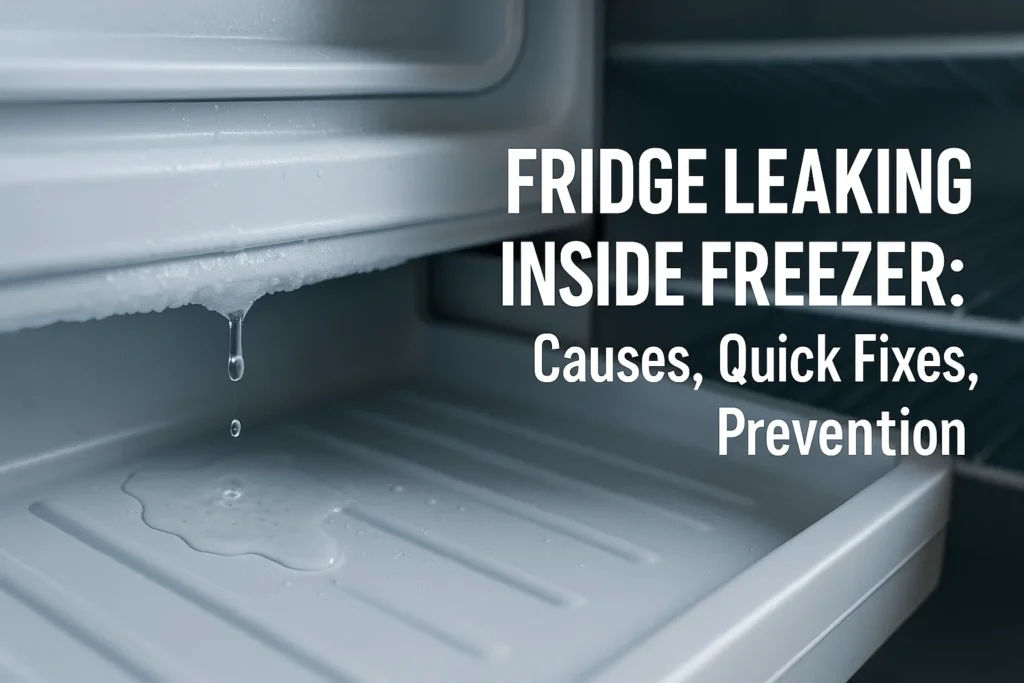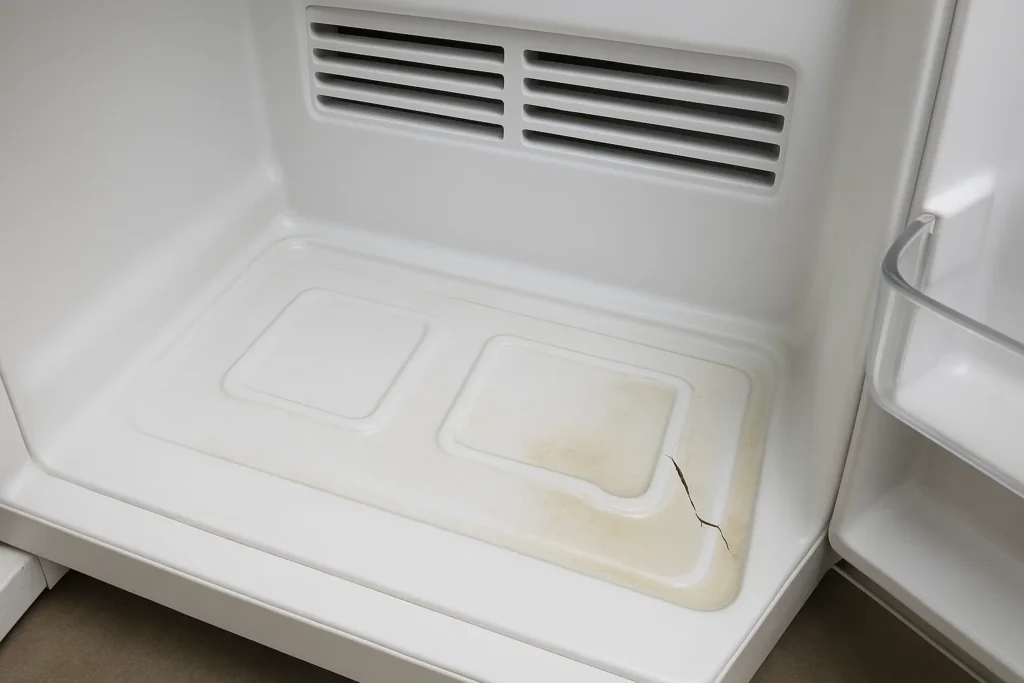Open the freezer for ice cream, find an ice rink instead? A “fridge leaking inside freezer” isn’t just messy—it’s a sign your cooling system needs attention before food safety and energy bills take a hit.
Water or ice inside the freezer can contaminate food (drips carry debris), cause odors, overwork the compressor, and waste energy. Light DIY is safe for clogs, gaskets, and airflow issues. If you see electrical faults, repeated leaks, or weak cooling, it’s time to call a pro—NYC readers can book same-day fridge repair in New York.
Identify your symptom
Water under drawers / on shelves
Usually a clogged defrost drain or a mis-seated drain valve. See Cause #1.
Ice sheet on the back wall
Frost building on the evaporator from airflow or defrost issues. See Causes #3–5, 8.
Drips near ice maker/dispenser
Think fill tube or water line leaks. See Cause #6.
Puddle by the door gasket, musty smell
Warm air sneaking in through a leaky gasket. See Cause #2.
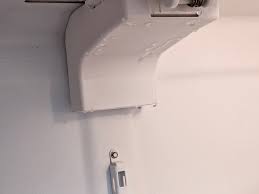
When it happens
- After defrost: residual meltwater → check drain path.
- Mornings / door frequently opened: warm, humid air → adjust temps & habits.
- Overfilled fridge: blocked vents → localized frost and drips.
5-minute diagnosis (decision tree)
- Level check: Is the fridge pitched slightly back (1–2°)?
- No → Level the feet; recheck leak.
- Yes → Continue.
- Door gasket test: Close a sheet of paper in the door and pull.
- Slides out easily → Gasket clean/reshape/replace.
- Grips firmly → Continue.
- Hear fan whistle / buzz and see frost on back panel?
- Yes → Possible evaporator frost → check defrost system & airflow.
- No → Continue.
- Have ice maker / water line? Inspect tubing & push-fits for dampness.
- Temperature sanity: Fridge +37–41°F (+3…+5°C), Freezer 0–3°F (−18…−16°C). Adjust if off.
- Quick drain test: Pour a small cup of warm water into the freezer drain channel.
- Backs up → Clear the defrost drain.
If you’d rather skip the guesswork, book refrigerator repair NYC—a tech can diagnose in one visit.
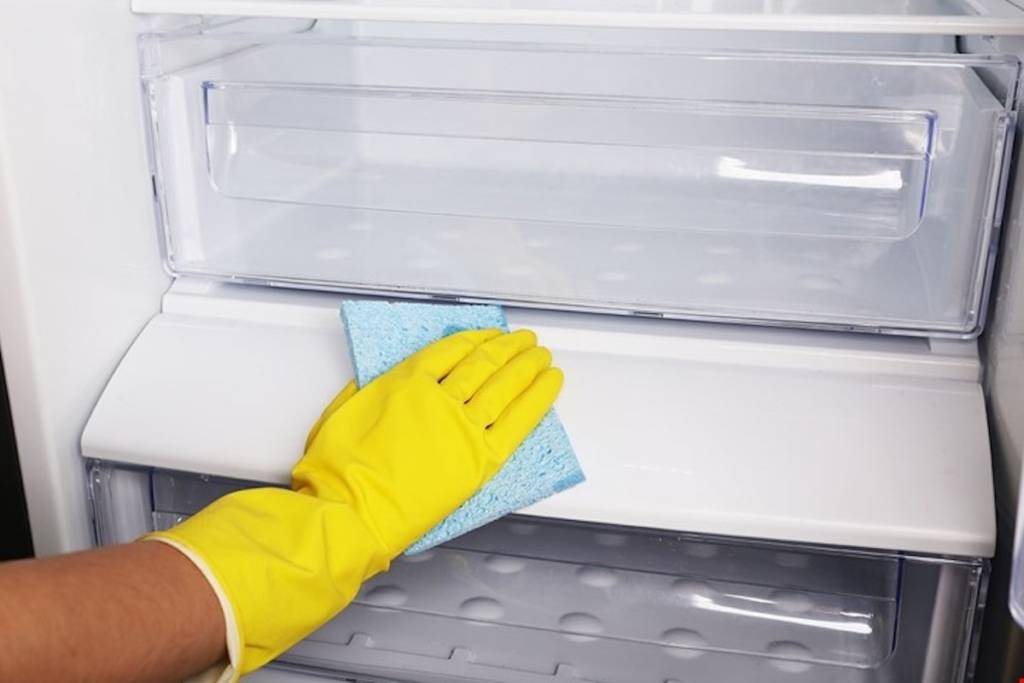
Main causes and exact fixes
1) Clogged defrost drain
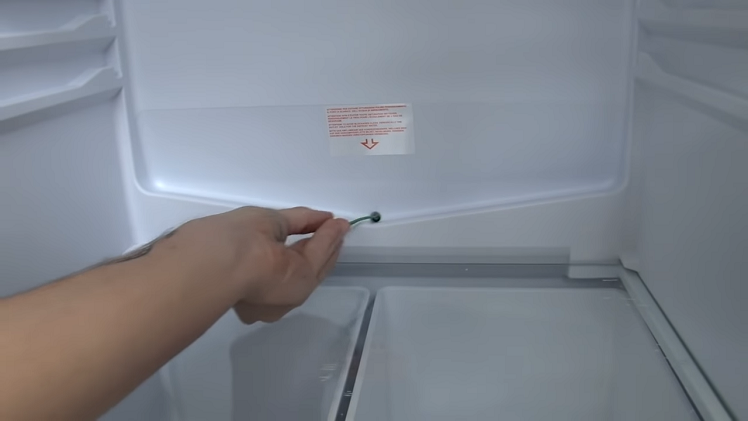
Signs: Ice “cap” on back wall, water in bottom pan/drawers.
Fix: Flush with warm water using a bulb syringe; gently clear with flexible nylon line; inspect the duckbill valve under the unit—trim or replace if stuck.
Prevent: Rinse the drain every 3–6 months; add a fine mesh over the drain inlet to catch crumbs.
2) Leaky or deformed door gasket
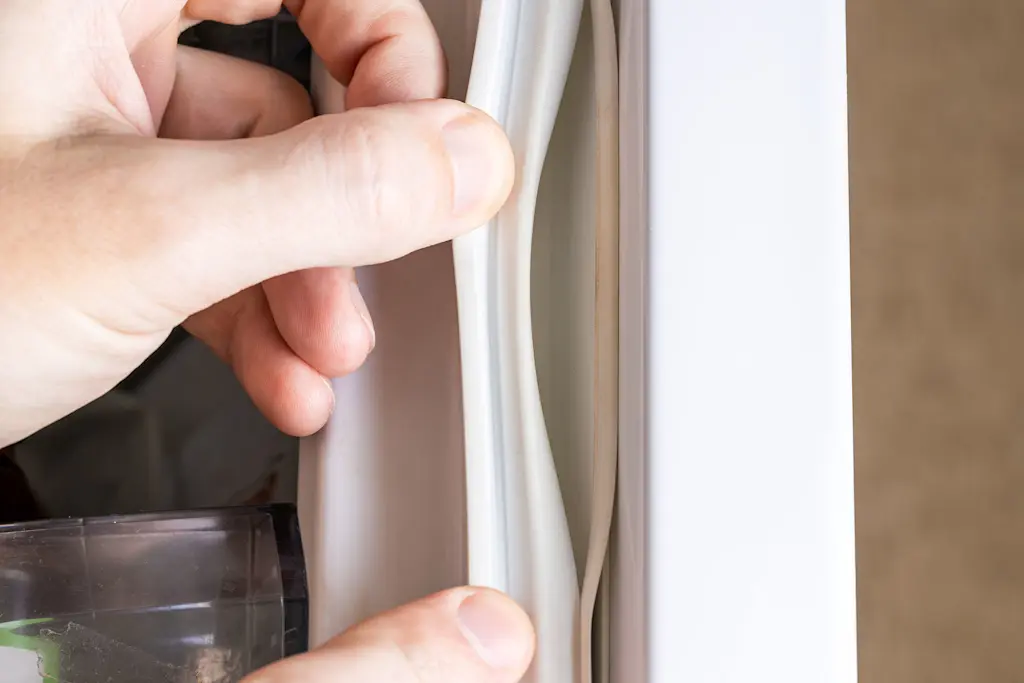
Signs: Condensation around door, rapid cycling.
Fix: Clean with mild soap, lightly silicone-spray the seal, warm with a hair dryer to reshape; if cracked or loose, order a model-specific replacement.
3) Installation & airflow issues
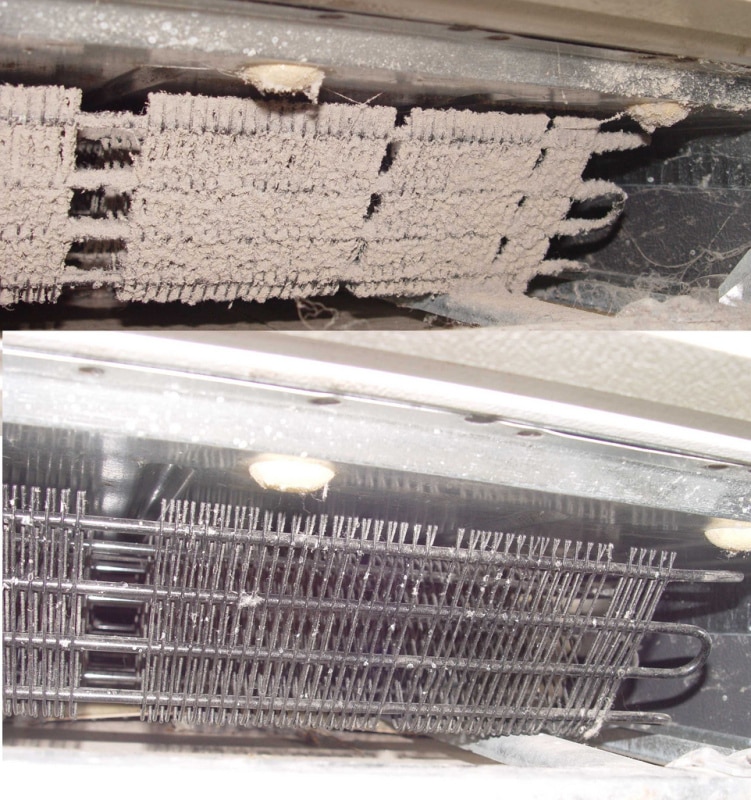
Too close to the wall, uneven floor, or dusty condenser.
Fix: Re-level feet; restore rear/side clearance; vacuum the condenser grille and coil.
4) Overloading / blocked air vents
Signs: Localized ice, intermittent drips.
Fix: Keep 1–2 in (2–3 cm) clear around vents and walls; don’t pack warm containers against the back panel.
5) Wrong temperatures / high kitchen humidity
Frost melts during cycles and turns to water.
Fix: Set recommended temps; enable No-Frost/Auto-defrost; avoid “Holiday” mode on a full fridge; improve kitchen ventilation.
6) Ice maker & water supply leaks
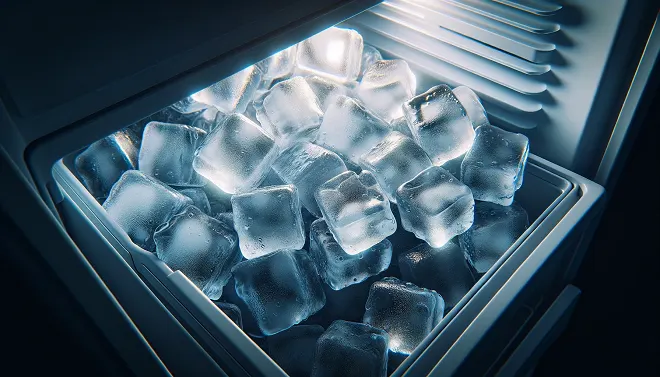
Cracked fill tube, loose push-fit, or frozen line.
Fix: Reseat/replace fittings; thaw/insulate the fill tube; verify household water pressure per maker spec.
7) Cracked or misseated evaporator/condenser drain pan
Fix: Reseat or replace the pan; confirm the condenser’s warm air reaches the pan for evaporation.
8) Defrost system faults (No-Frost)
Parts: Heater, defrost sensor/thermal fuse, timer/control board.
Signs: Heavy frost on evaporator; leaks return after manual defrost.
Fix: Test with a multimeter; replace the failed component.
9) Frozen drain from frequent door openings
Fix: Full manual defrost 12–24 h; then apply prevention steps.
Need hands-on help? Get fridge leaking repair in New York today.
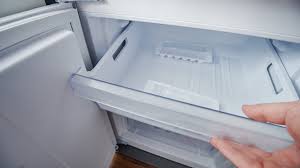
Step-by-step DIY (with photos/diagrams)
Safety first: Unplug the fridge; shut off the water supply.
- Access freezer rear panel (evaporator/drain area).
- Warm-water flush via syringe or narrow tubing.
- Clear/check duckbill valve underneath (if present).
- Clean & reshape/replace door gasket.
- Inspect ice maker line and fittings.
- Reassemble; monitor for 24 h.
Tools: Hair dryer (low heat), 60 ml syringe/bulb, thin nylon line, multimeter, screwdrivers, level, microfiber cloths.
Parts: Door gasket, duckbill valve, fill tube, push-fit fittings, drain pan, defrost heater/sensor (by model).
Short on time? Book refridgerator repair (NYC)—yes, even if you typed “fridge is leeking,” pros know exactly what you mean.
When to call a technician
- Leak returns within 1–3 days after drain cleaning
- Tripped thermal fuse or control board error codes
- Burnt smell, scorching, or oil traces (possible refrigerant leak)
- Weak cooling alongside leaks
Prevention checklist
- Clean the defrost drain & condenser every 3–6 months
- Keep vents clear; avoid overpacking
- Maintain correct temps; ventilate the kitchen
- Close doors promptly; inspect the gasket seasonally
- Do a seasonal full defrost (if not true No-Frost)
Brand/type notes (quick pointers)
- No-Frost vs. static: Different leak patterns & access points; No-Frost hides the evaporator behind a panel.
- With ice maker/dispenser: Prioritize water line and fill tube checks first.
- Popular brands (Samsung, LG, Whirlpool, Bosch, GE, etc.): Drain location varies; remove the rear freezer panel carefully and photograph sensor/clip placement before moving anything—then reverse-match during reassembly.
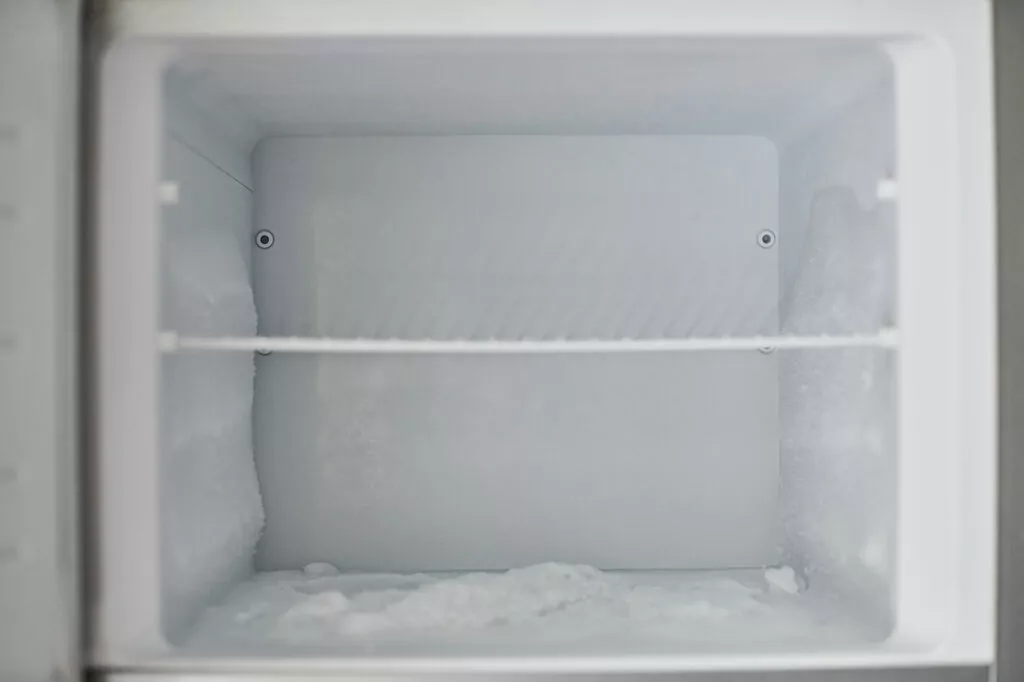
Common mistakes to avoid
- Chiseling ice with sharp tools
- Pouring boiling water or using a heat gun
- Removing panels without photographing sensor placement
FAQ
Why is there ice in the freezer but water in the fridge compartment?
Airflow imbalance or a clogged defrost drain is pushing meltwater toward the fresh-food section.
How do I know if the defrost drain is clogged?
Warm water pooled in the drain channel or backing up during a pour test is a giveaway.
Is vinegar or chemical cleaner safe for the drain?
Use warm water with a drop of mild detergent. Avoid harsh chemicals that can damage plastics and seals.
What if the leak is only under the ice maker?
Inspect the fill tube and push-fit connectors; look for hairline cracks and frost around the inlet.
Is a small puddle under the fridge normal after defrost?
A little moisture is normal; ongoing puddles indicate a pan, airflow, or drain issue.
Will a 24-hour defrost permanently fix it?
It clears ice, not causes. Follow up with drain cleaning and gasket/airflow checks.
How much clearance from the wall do I need?
Follow your manual; as a rule of thumb, leave at least 2 in (5 cm) rear clearance.
What temperatures prevent leaks?
Fridge +37–41°F (+3…+5°C); Freezer 0–3°F (−18…−16°C).
